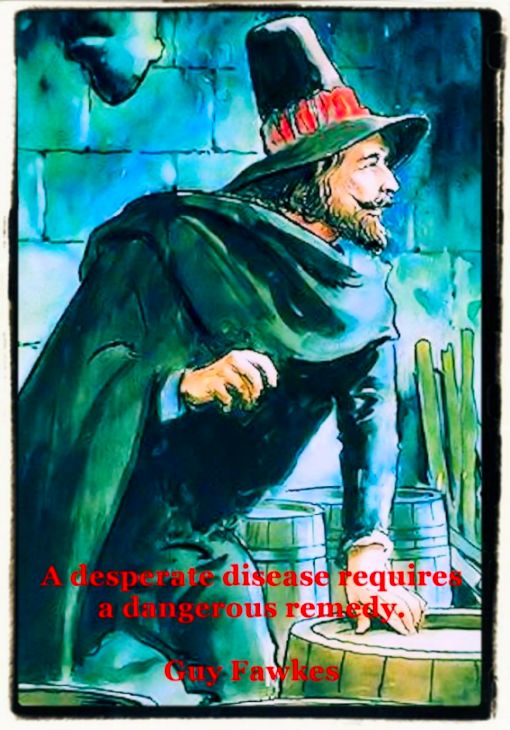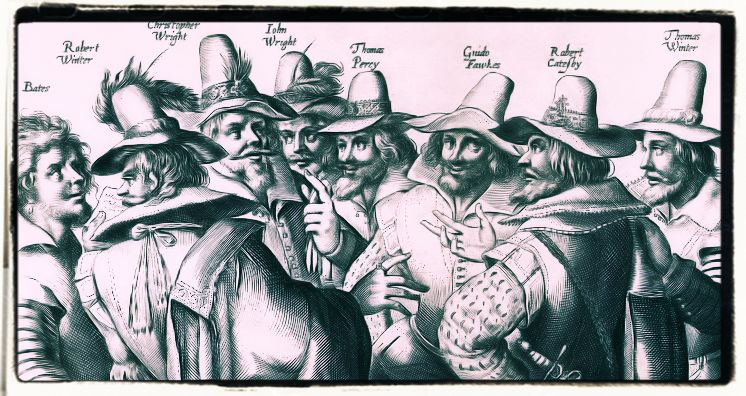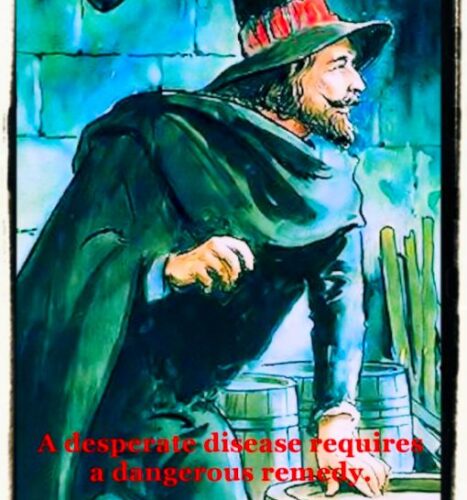
Guy Fawkes story and the Gunpowder plot, an easy article for students of English that explains the origin of the story with its celebrations and customs.
A desperate disease requires a dangerous remedy.
Guy Fawkes
Guy Fawkes is not dead, he is living inside our minds and our souls with his ideas and our hopes.
Carl William Brown
Remember, remember, the 5th of November The Gunpowder Treason and plot; I know of no reason why Gunpowder Treason Should ever be forgot.
Folk song
Guy Fawkes (1570-1606), also known as Guido Fawkes, English Gunpowder plot conspirator, the only son of Edward Fawkes of York, a member of a Yorkshire family and advocate of the archbishop of York’s consistory court, was baptized at St. Michael le Belfrey at York on April 16, 1570.
His parents being Protestants, Fawkes was educated at the free school at York. Soon after his father’s death his mother remarried. Fawkes’s stepfather was connected with many Roman Catholic families and was probably a Roman Catholic himself, and Fawkes became a zealous adherent of the old faith. In 1593 he went to Flanders and enlisted in the Spanish army, assisting at the capture of Calais by the Spanish in 1596 and gaining some military reputation.
The Gunpowder Plot
In 1604 Thomas Winter, at the instance of Robert Catesby, in whose mind the Gunpowder plot had now taken definite shape, introduced himself to Fawkes in Flanders, and as a “confident gentleman,” “best able for this business,” brought him on to England as assistant in the conspiracy. Shortly afterward he was initiated into the plot, after taking an oath of secrecy, meeting Catesby, Thomas Winter, Thomas Percy and John Wright at a house behind St. Clement’s.
Since he was unknown in London, and because of his exceptional courage, coolness and probably his military experience, Fawkes was entrusted with the actual accomplishment of the design; when the house adjoining the parliament house was hired in Percy’s name, he took charge of it as Percy’s servant, under the name of John Johnson.
The first meeting of the five central conspirators had took place on Sunday 20 May 1604, at an inn called the Duck and Drake, in the fashionable Strand district of London. The contemporaneous account of the prosecution (taken from Thomas Wintour’s confession) claimed that the conspirators attempted to dig a tunnel from beneath Whynniard’s house to Parliament, although this story may have been a government fabrication; no evidence for the existence of a tunnel was presented by the prosecution, and no trace of one has ever been found. He acted sentinel while the others worked at the mine in Dec. 1604, and on the discovery and hiring of the adjoining cellar, beneath the house of lords, he arranged in it the barrels of gunpowder, which he covered with firewood and coals and with iron bars to increase the force of the explosion.

When all was ready in May 1605, Fawkes was dispatched to Flanders to acquaint Sir William Stanley (who had betrayed the city of Deventer to the Spaniards in 1587) and the intriguer Hugh Owen with the plot. He returned in August and brought fresh gunpowder into the cellars to replace any spoiled by damp. A slow match was prepared which would give him a quarter of an hour in which to escape from the explosion.
The plot however failed because it was revealed to the authorities in an anonymous letter sent to William Parker, 4th Baron Monteagle, on 26 October 1605. During a search of the House of Lords at about midnight on 4 November 1605, Fawkes was discovered guarding 36 barrels of gunpowder, enough to reduce the House of Lords to rubble and arrested.
Most of the conspirators fled from London when they learned of the plot’s discovery, trying to enlist support along the way. Several made a stand against the pursuing Sheriff of Worcester and his men at Holbeche House; in the ensuing battle, Catesby was one of those shot and killed. At their trial on 27 January 1606, eight of the survivors, including Fawkes, were convicted and sentenced to be hanged, drawn and quartered.
Fawkes behaved with the utmost fortitude when arrested. He refused stubbornly to give information concerning his accomplices on Nov. 8 he gave a narrative of the plot, but it was not till the yth when the fugitive cons irators had been taken at to his he that torture wrug from him their names. His signature to his confession of this date, in only of his Christian Name and written in a faint and trembling hand, is probably a ghastly testimony to the severity of the torture which James had ordered to be applied if he would not otherwise confess.
He was tried, together with Robert and Thomas Winter, John Grant, Ambrose Rokewood, Robert Keyes and Thomas Bates, before a special commission in Westminster hall on Jan. 27, 1606. Fawkes suffered death in company with Thomas Winter, John Grant, Ambrose Rokewood, Robert Keyes on the 31st, being drawn on a hurdle from the Tower to the parliament house, opposite which he was executed. He made a short speech on the scaffold, expressing his repentance, and mounted the ladder last and with assistance, being weak from torture and illness.
You can also read:





